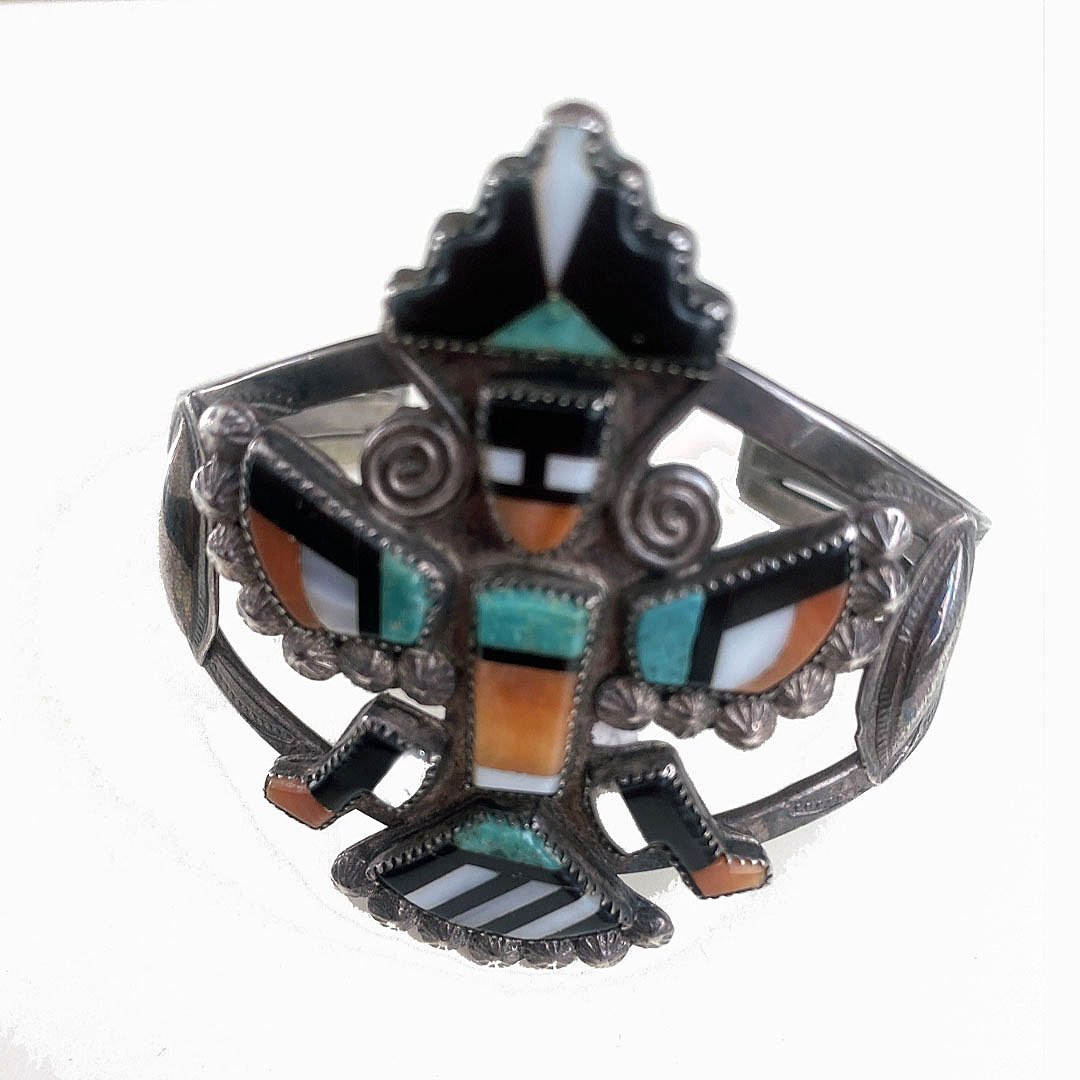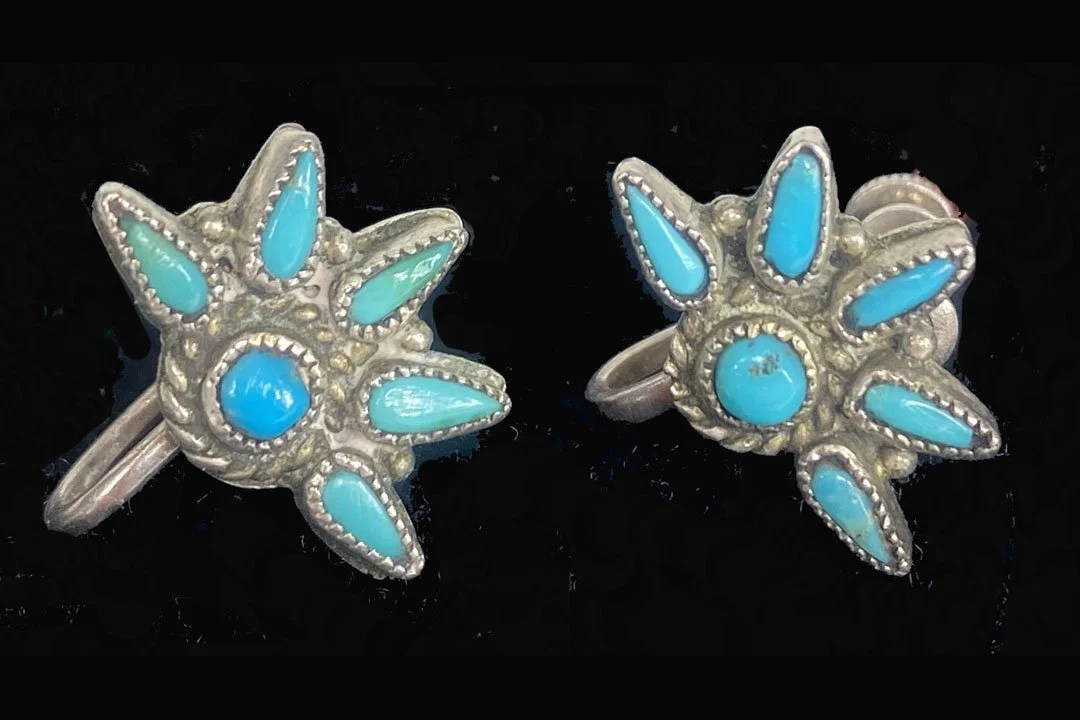Zuni channel-inlaid long-horn katsina (Saiyatasha) pin
Zuni channel-inlaid long-horn katsina (Saiyatasha) pin
1.0625” wide x 2.375” high
high-grade turquoise, onyx, mother of pearl, spiny oyster and sterling silver
excellent condition given its age, with several tiny chips out of the stones and one stable crack rising up from one eye. It has evident wear, which many collectors like.
circa 1930-1940
$1400.
(J2208)
The Zunis developed channel-inlay jewelry beginning in 1929, according to Paula Baxter in Southwest Silver Jewelry (Schiffer Publishing Co, Atglen, PA, 2001), p. 29. Zuni lapidaries and silversmiths rapidly developed these techniques throughout the 1930s-1940s and Zuni channel work is readily available in contemporary Zuni jewelry.
This example depicts a Zuni long-horn katsina. It is beautifully made, with high-quality stones cut to fit precisely within the silver channels. There is wonderful wear on the silver trim edging which was clearly skillfully made. The long-haired katsina image is rarely depicted, making this pin rare.
While the Zuni had their own silversmiths, a piece such as this, with high quality stones, lapidary work, and quality silver work was likely the result of collaboration between a Zuni artist and a Navajo silversmith who came to Zuni. This pin most likely dates to the 1930s. Each silver bead along the edge was individually made and then soldered onto the pin, something that happened more frequently in the 1930s. By the 1940s, the Zuni silversmiths began to form the beads out of the same silver as the piece of silver it rests on. If you look closely at the base below the collar of the katsina, you will see that each crescent is hand-stamped. and you will see wear on the silver beading.
The minor and very tiny chips in the stones and stable crack above the eye are evidence of it having been worn and appreciated. These are compensated by the rarity and quality of the piece. Collectors like to see evidence of use and wear.







